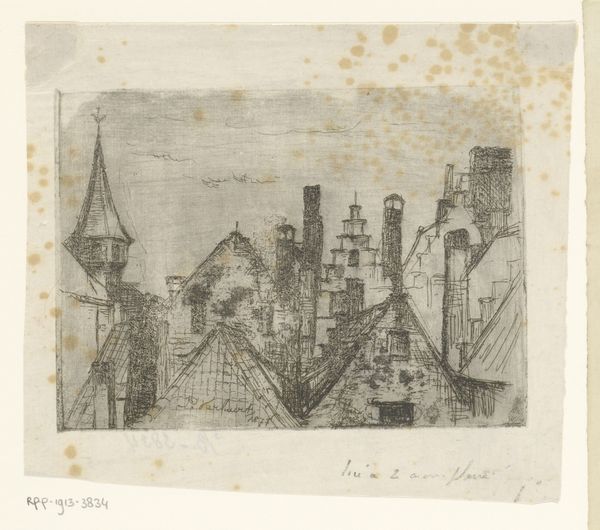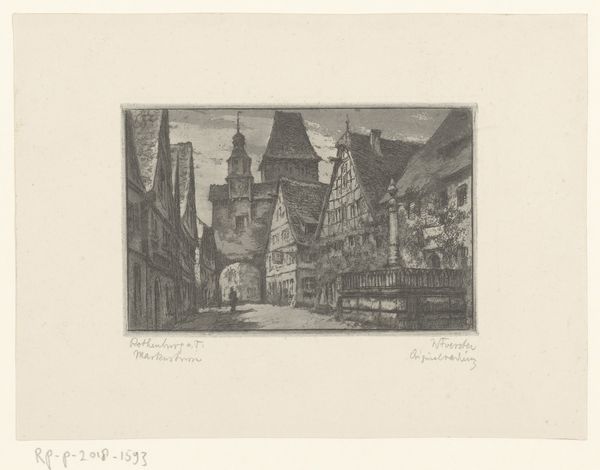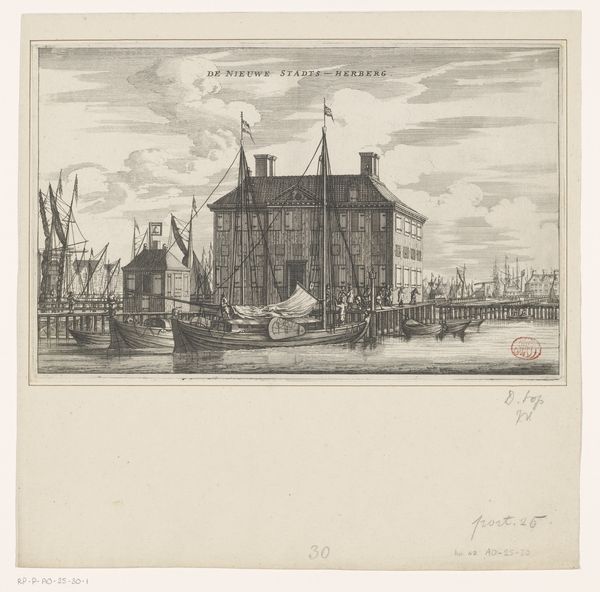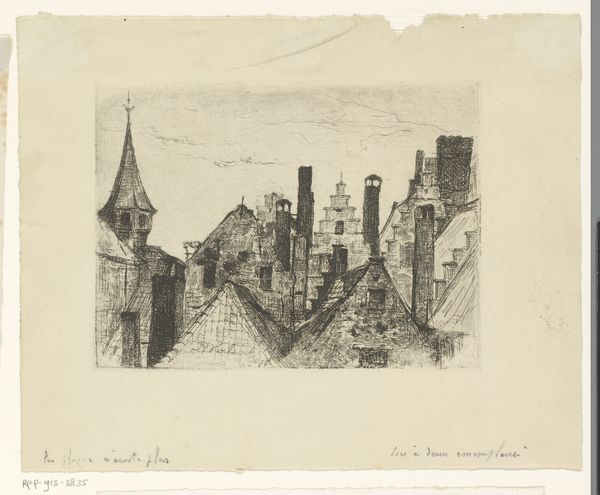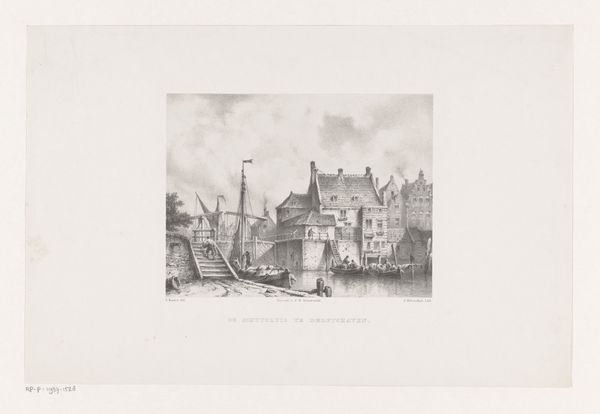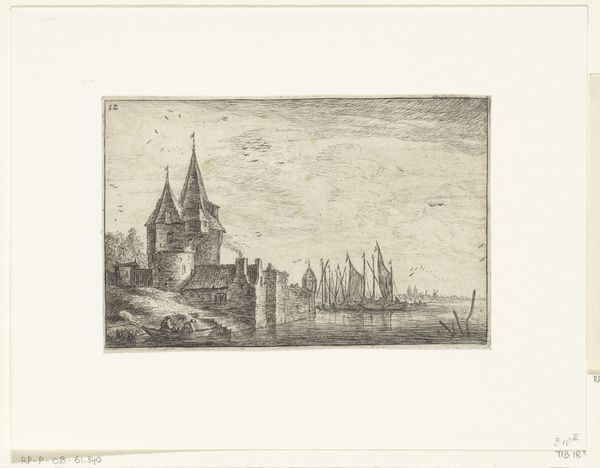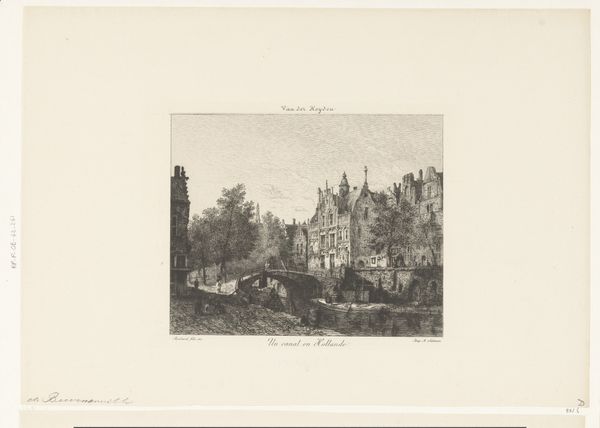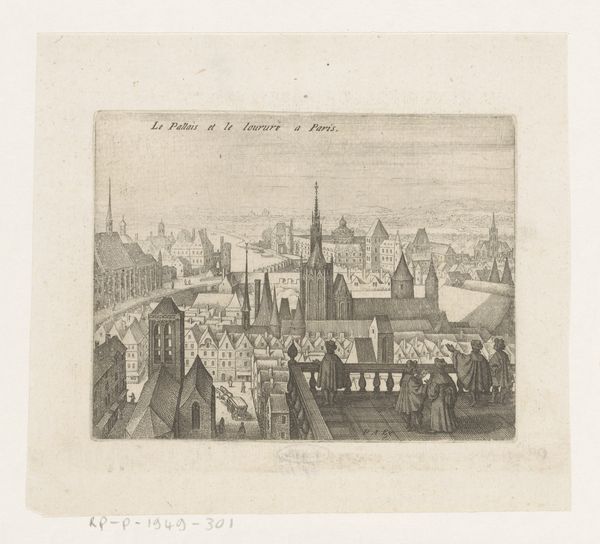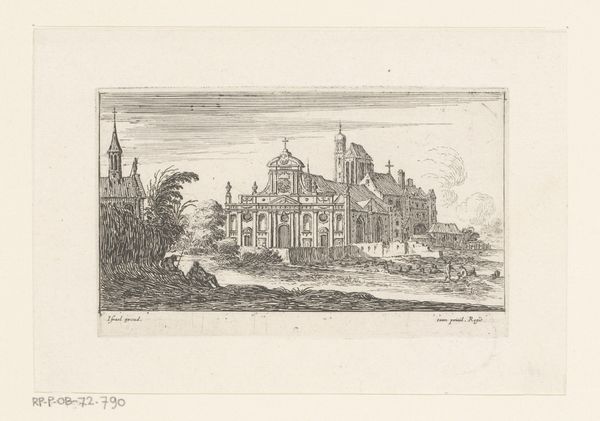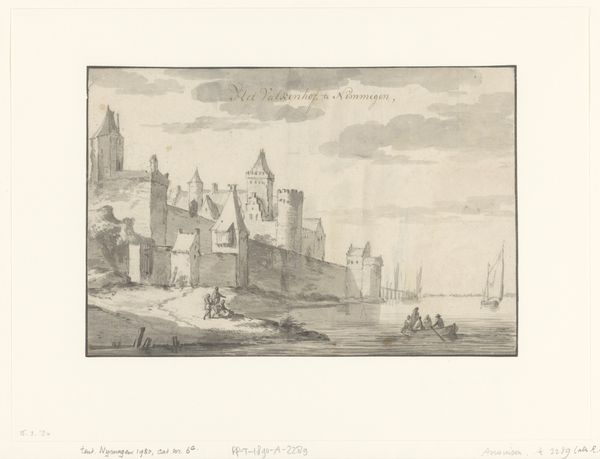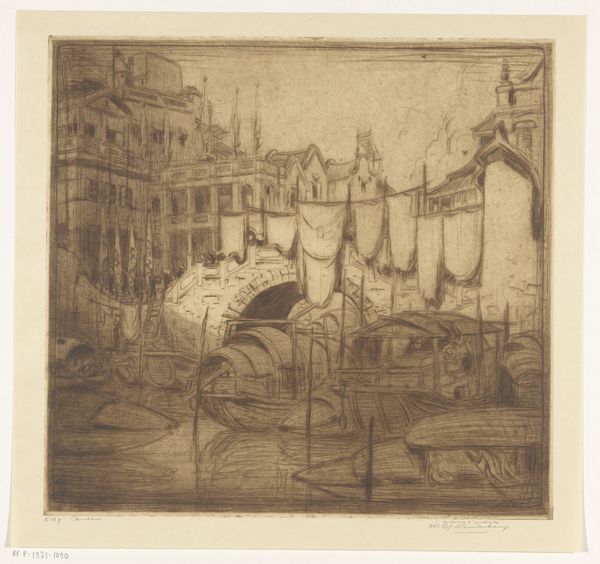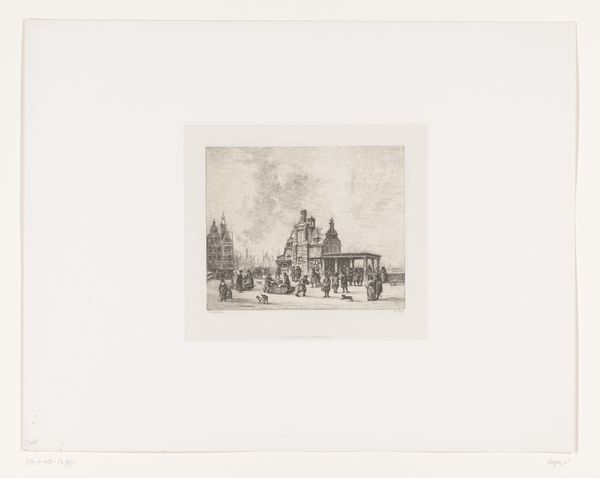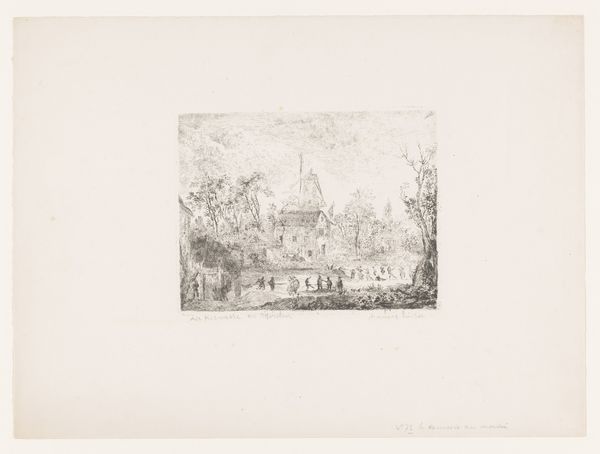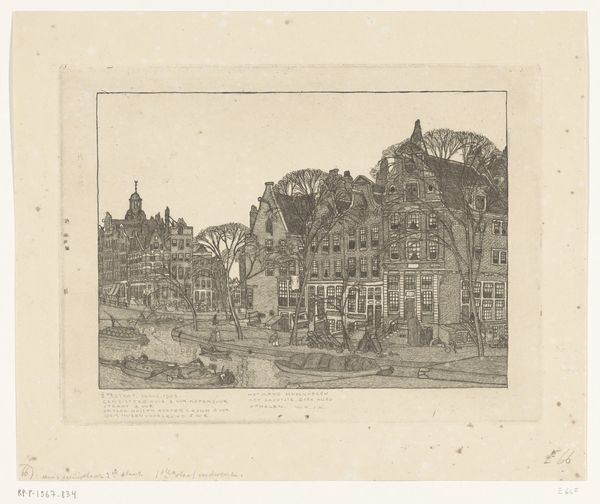
print, engraving
# print
#
old engraving style
#
romanticism
#
cityscape
#
genre-painting
#
engraving
Dimensions: height 182 mm, width 196 mm
Copyright: Rijks Museum: Open Domain
Curator: I am glad we will be exploring this wonderful engraving today! Editor: Yes! So, this is "View of the 'Rookhuis' in Antwerp" by Jean Théodore Joseph Linnig, created in 1847. It's a print, and it immediately struck me as both peaceful and somehow industrious, perhaps due to the buildings and the people in the boat. How would you interpret this work? Curator: Considering the era and the process of engraving, let's examine the labor embedded within this image. Engraving was painstaking and highly skilled work, reflecting a specific kind of artisanal production. Does the depiction of Antwerp resonate with an idealized version of urban life, masking potential social inequalities? Editor: I see what you mean! The "peaceful" aspect I noted might actually obscure the labor that built this cityscape and kept it running. Are you saying Romanticism here maybe idealizes certain modes of production? Curator: Exactly. Romanticism often looks back to an imagined past, potentially obscuring the realities of labor and production. Also consider the materials: paper, ink, and the metal plate used for the engraving itself. These elements contribute to the artwork's material presence and its position within the art market. What sort of dialogue might this print be having with painting practices, at the time? Editor: It’s interesting to consider how a relatively reproducible medium like print stands against the perceived originality and "aura" of painting. I wonder, was Linnig consciously positioning printmaking as a commentary on those distinctions? Curator: Possibly. And thinking about audience: prints democratized art consumption, making images accessible to a wider public than unique paintings could reach. Linnig, through the medium of engraving, participates in and perhaps critiques this changing landscape of art production and consumption. It's less about 'high art,' more about circulating images, skills, and labour. Editor: That is very helpful to know! I initially saw a romantic landscape, but now understand a subtle but crucial story regarding materials, work, and social aspects inherent in this print. Curator: Indeed! Looking beyond just the image towards its making and distribution offers much greater insight!
Comments
No comments
Be the first to comment and join the conversation on the ultimate creative platform.
